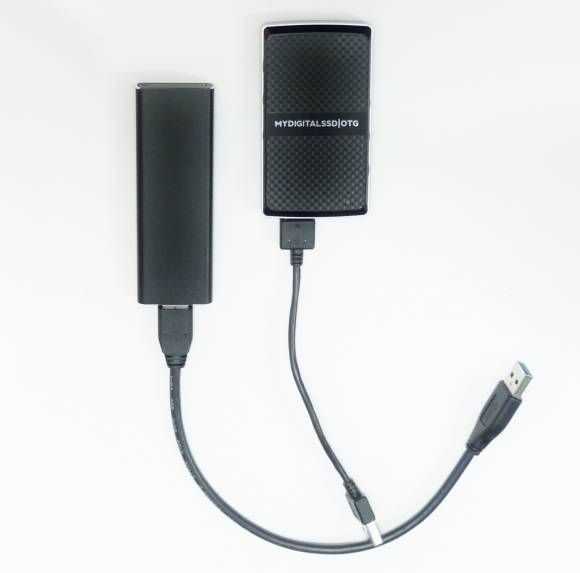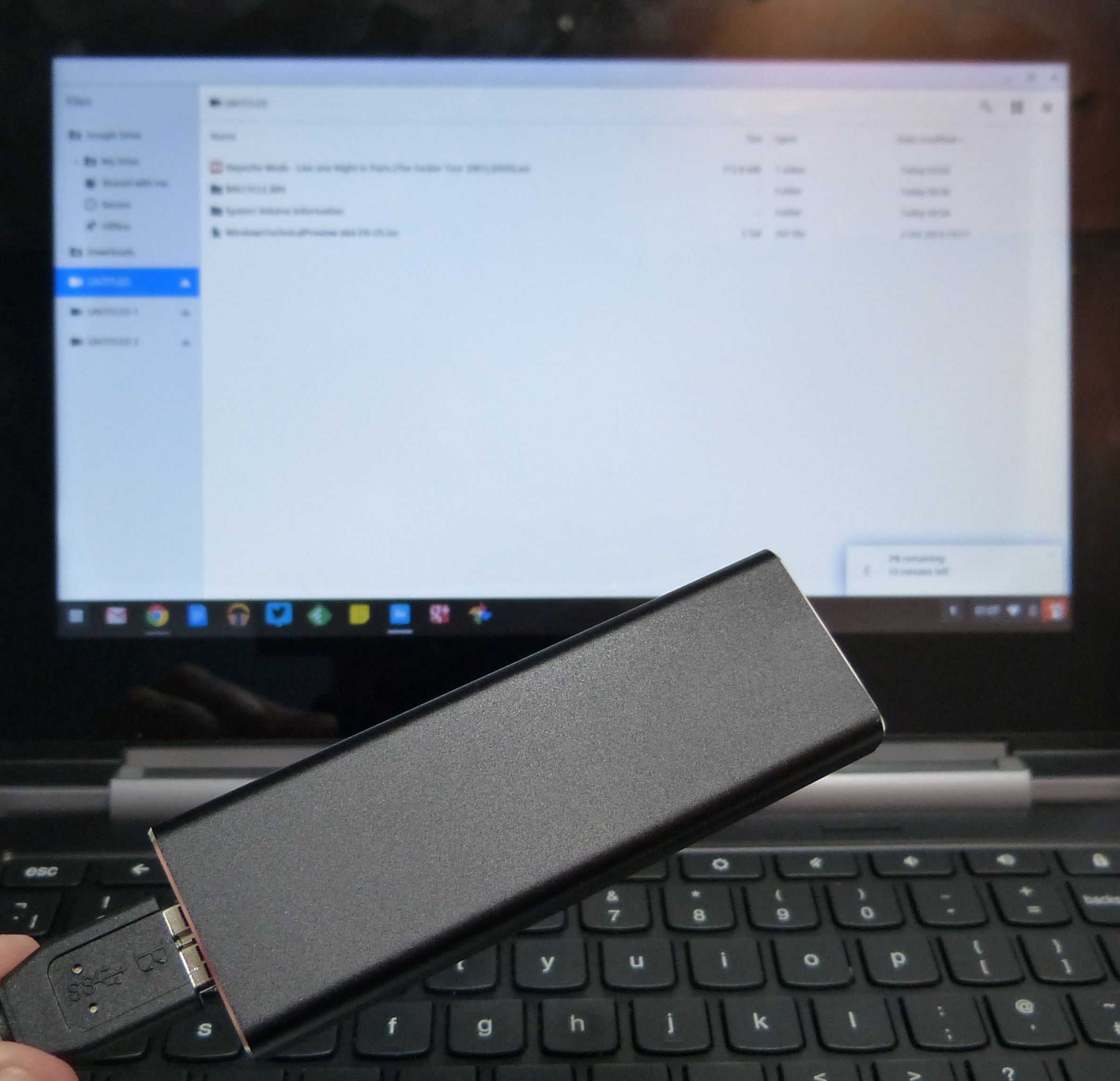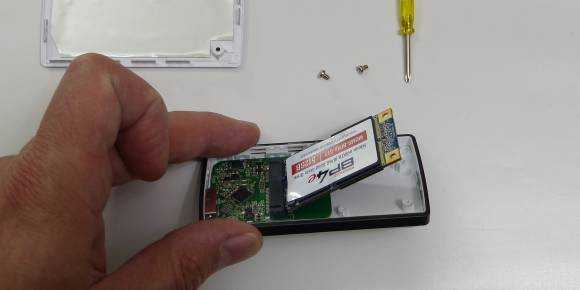Local storage on Chromebooks is minimal and in some cases it’s too little. You can stream videos and music from the cloud but that’s not practical when you’re on the go so you’ll need a lot more local storage if you want to listen to a good music collection or have a wide choice of videos on planes, trains and automobiles. Some Chromebooks can be upgraded and the C720 is a great example as we found when we we dropped a large SSD into that but what if you don’t want to open up the back of your Chromebook or what if there’s no possibility of doing that due to soldered eMMC storage as found on many Chromebooks now? You’ve got two options. An SD card or an external drive. We’ve completed testing some very fast and lightweight USB 3.0 SSD solutions from MyDigitalSSD that might just be perfect for your Chromebook.
At 1.76 ounces and with a transfer speed of over 400MB/s the MyDigitalSSD OTG, also available in a build-your-own version, is one of the best external storage devices available. On the left in the picture below you’ll see the MydigitalSSD enclosure for M.2 SATA which is made from aluminium, takes a lower-power NGFF (M.2 SSD,) weighs 65 grams and offers an even more rugged option.

Inside these enclosures you’ll find space for a small form-factor SSD in the mSATA format or the M.2 SATA format (aka NGFF.) Quality and speeds can vary depending on what you put in but we’ve been testing the MyDigitalSSD BP4e (mSATA 512GB version) and the Super Cache 2 (M.2 SATA 128GB version.) It’s impressive.
We’ve done some tests on the Lenovo N20P Chromebook over USB 3.0 and while the internal SSD can’t support the peak speeds of these USB SSD drives the transfer speeds were twice as fast to these SSDs compared to a 2.5-inch hard drive. We were able to transfer a 2 GB file out from the Chromebook to the SSD at 43 MB/s. The hard drive averaged 19.7 MB/s. If you attach these drives to a fast, SSD-based laptop you’ll be able to transfer onto these USB 3.0 drives at speeds of over 200MB/s. Throwing multi-Gigabyte videos and thousands of music files onto these drives is a breeze.
Measuring disk transfer speeds on a Chromebook is difficult and the limiting factor is the speed of the internal drives which are generally quite slow but we’ve put a number of devices in a file transfer test on the Lenovo N20P and here are the results:
2GB ISO file transferred over the USB 3.0 port from the Chromebook to the external storage formatted as FAT 32. (Don’t use NTFS formatted drives. They work but they are slow.)
- SDCard Transcend SDHC 8GB Class 10: 18MB/s
- Hard Drive (USB2.0 enclosure with 5400 RPM spinning hard drive) – 19.7MB.s
- MyDigitalSSD USB 3.0 enclosure for M.2 SATA (shown in images here) with SuperCache2 M.2 120GB drive – 37MB/s
- MyDigitalSSD OTG USB 3.0 2556GB – 42MB/s
- MyDigitalSSD BP4 USB 3.0 enclosure (shown in images here) with BP4 240GB mSATA drive – 43MB/s
Note that the MyDigitalSSD products all tested at over 200MB/s on a fast Ultrabook with SSD storage. (See video below.)
For a How-To on the BP4 enclosure and some 400MB/s transfer speeds, watch this video…
Summary
The MyDigital USB3.0 SSD drives can save time over SD and external hard drives, improve ruggedness over spinning hard drives and give you faster transfer speeds than SD cards. While the internal drives on Chromebooks can be the limiting factor on Chromebook transfers the fast speeds they can achieve on PCs with fast SSD drives reduces the overall time to transfer files. Recommended for those wanting to carry their video and music collection for offline use on a Chromebook. The price for the enclosures starts at $25. Maybe you’ve already got an mSATA or M.2 module you can use but if not, we recommend MyDigitslSSD storage.
MyDigitalSSD links:
Thanks to MyDigitalSSD for sending these products for long-term review.















